Discovering the Beauty of Travertine Waterfalls
Nature’s Limestone Masterpieces
All you need to know about Travertine Waterfalls
Waterfalls have long captivated our imaginations with their breathtaking beauty and dynamic displays of nature’s power. Among the most stunning and unique of these natural wonders are travertine waterfalls, a type of waterfall that showcases the artistic capabilities of water and stone.
These cascades, formed over thousands of years, are characterised by their terraced formations, crystal-clear waters, and delicate, mineral-rich deposits. Let’s delve into the fascinating world of travertine waterfalls, exploring how they form, where to find them, and why they continue to inspire awe in all who visit.
***All photos are of Kaparkan Falls in Tineg, Abra, Philippines unless otherwise stated
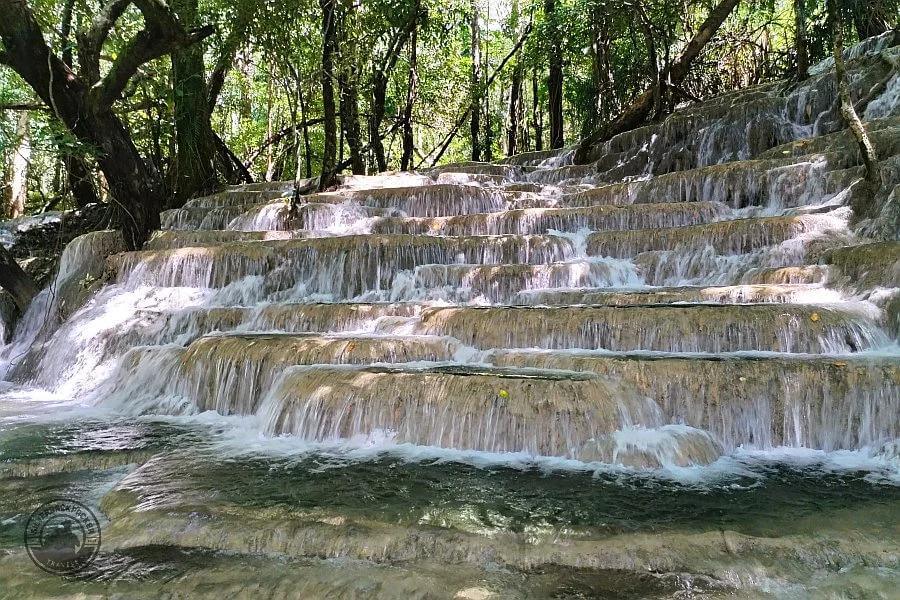
What Are Travertine Waterfalls?
Travertine waterfalls are formed when mineral-rich water flows over limestone, depositing calcium carbonate that builds up over time to create stunning terraced pools and intricate rock formations.
Unlike other waterfalls that carve their way through rock, travertine waterfalls grow as the minerals in the water accumulate, creating new layers and formations. The result is a visually striking landscape of cascading water, natural terraces, and vibrant colours that range from pure white to soft yellows, greens, and blues.
These formations are made primarily of travertine, a form of limestone deposited by mineral springs, particularly hot springs.
Travertine is a type of sedimentary rock, and its formation is a slow and continuous process driven by the movement of water and the precipitation of dissolved minerals.
Over time, the accumulation of these minerals builds up, creating natural dams and terraces that guide the flow of water in beautiful and often unexpected ways.

How Do Travertine Waterfalls Form?
The formation of travertine waterfalls is a delicate dance of geology, chemistry, and hydrology. The process begins deep underground, where rainwater mixes with carbon dioxide to form a weak carbonic acid.
As this acidic water seeps through the earth, it dissolves limestone and other minerals, becoming saturated with calcium carbonate. When this mineral-rich water reaches the surface—often in the form of a hot spring or a cool stream—it begins to lose carbon dioxide, and the dissolved calcium carbonate starts to precipitate out of the water.
As the calcium carbonate is deposited, it solidifies, creating layers of travertine rock. These layers build up gradually, forming natural barriers, dams, and terraces that shape the water’s flow.
Over time, these deposits grow larger and more complex, creating the stunning terraces and pools that define travertine waterfalls. The constantly flowing water continues to deposit new layers, evolving the landscape in a slow but steady process that can take thousands of years.
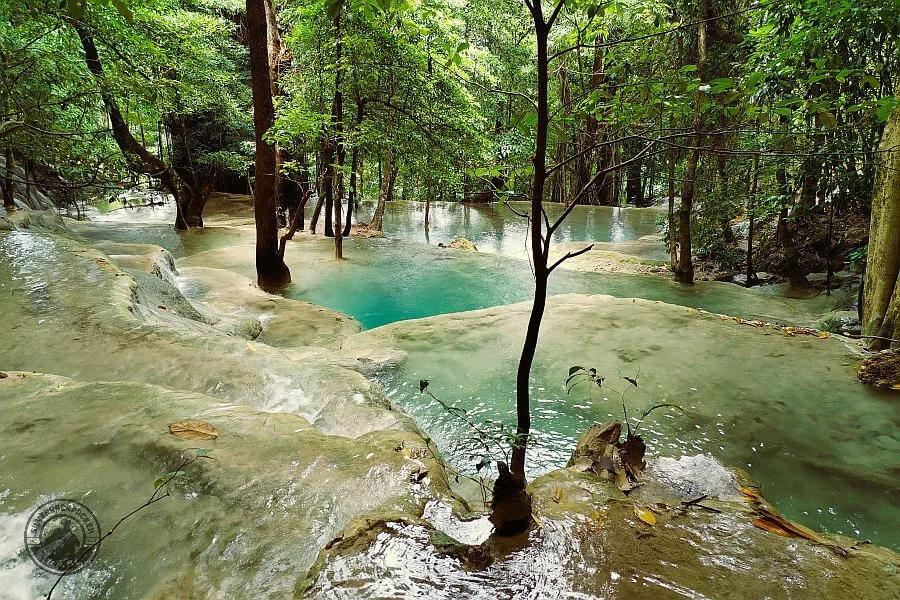
The Unique Characteristics of Travertine Falls
Travertine waterfalls are visually distinct from other types of waterfalls due to their unique formations and colours. Here are some key characteristics that set them apart:
Terraced Pools – One of the most recognisable features of travertine waterfalls is their terraced pools, which are formed by the buildup of travertine deposits. These pools often cascade into one another, creating a stepped effect that looks almost sculpted. The water in these pools is usually crystal clear, reflecting the colours of the sky, vegetation, and minerals below.
Brilliant Colours – The colours of travertine waterfalls can range from milky white to shades of green, blue, and even golden yellow. These colours are influenced by the mineral content of the water, the presence of algae, and the way sunlight interacts with the water and rock. The striking blues and greens often seen in travertine pools are caused by dissolved minerals like copper and iron, as well as the purity of the water.
Constantly Changing – Travertine waterfalls are living landscapes. They are constantly evolving as new travertine is deposited and old layers are eroded away. This dynamic process means that no two visits to a travertine waterfall are ever the same, each time you return, the formations may have shifted slightly, with new terraces or pools appearing.
Smooth, Sculpted Rock – The calcium carbonate that forms travertine is relatively soft, and the flowing water shapes it into smooth, rounded formations that look almost sculpted. These rocks are often porous and delicate, with intricate patterns that tell the story of their formation.
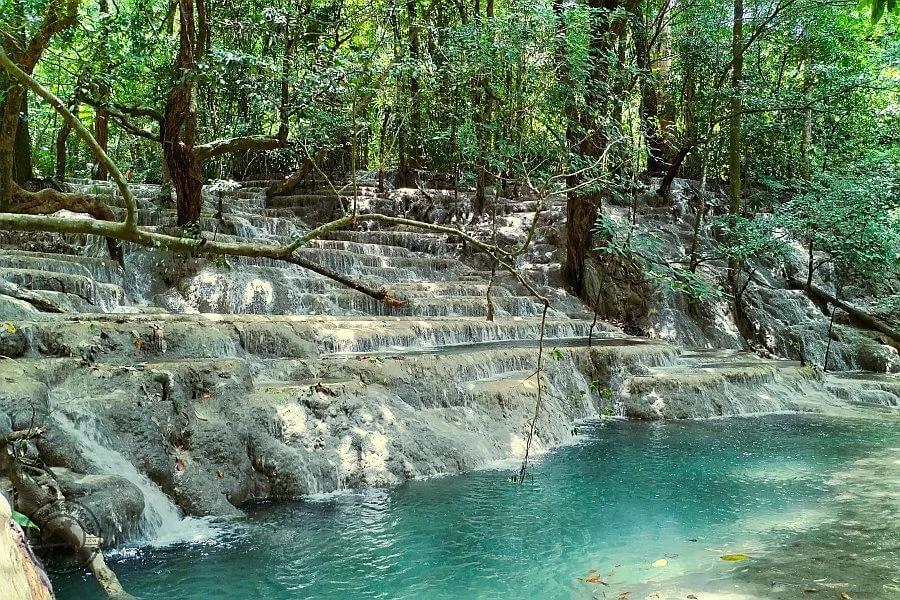
Why Travertine Falls Captivate Us
Travertine waterfalls captivate us because they are a perfect blend of natural beauty, geological wonder, and ever-changing artistry. They remind us of the patience and power of nature—how, over time, water can shape stone into something breathtakingly beautiful. Travertine waterfalls also offer a sensory experience that goes beyond mere sightseeing: the sound of water flowing, the feel of smooth rock underfoot, and the refreshing coolness of the crystal-clear pools all contribute to their allure.
Moreover, travertine waterfalls are fragile ecosystems that require protection and respect. Visiting these natural wonders offers an opportunity to connect with nature in a profound way, reminding us of the importance of preserving such unique landscapes for future generations.
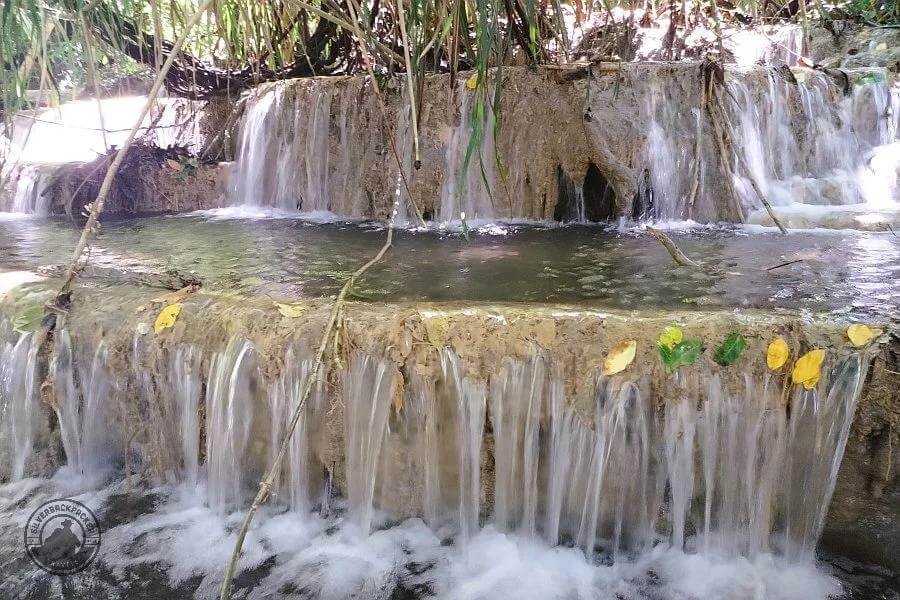
Travertine Waterfalls as Nature’s Sculptures
Travertine waterfalls are a testament to nature’s ability to create beauty from the simplest of elements—water, stone, and time. Their intricate formations, vivid colours, and tranquil settings make them some of the most awe-inspiring natural wonders on the planet. Whether you find yourself wandering the terraces of Pamukkale, exploring the pools of Hierve el Agua, or marvelling at the lakes of Plitvice, you’ll be witnessing a masterpiece that has been thousands of years in the making.
Next time you plan your travels, consider seeking out a travertine waterfall. These breathtaking sites offer more than just a stunning view—they provide a glimpse into the slow, deliberate processes that shape our world, inviting us to pause, reflect, and appreciate the art of nature.
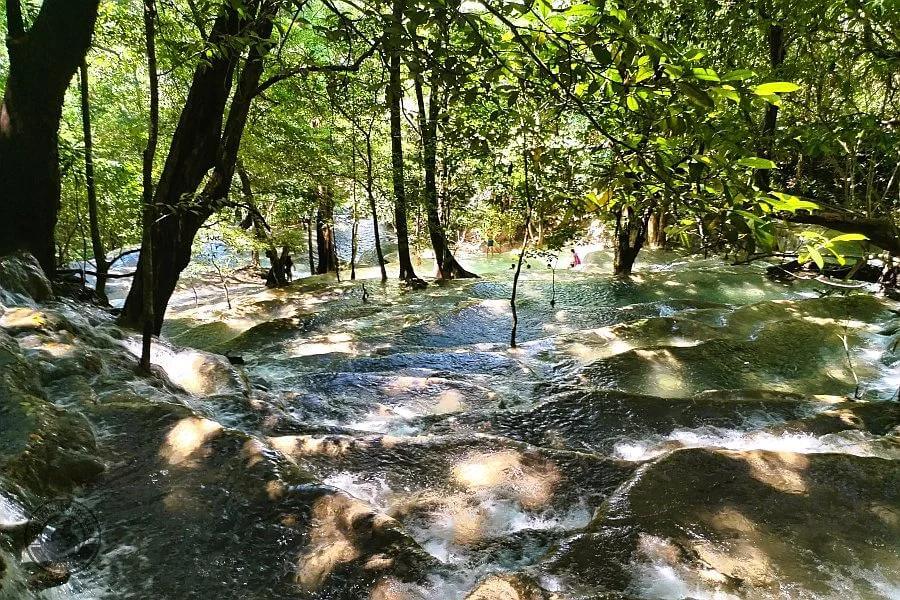
Famous Travertine Waterfalls Around the World
Travertine waterfalls can be found in various locations worldwide, each offering a unique glimpse into the beauty of this natural phenomenon. Here are some of the most famous travertine waterfalls that you should consider visiting: –
Pamukkale, Turkey
Perhaps the most famous travertine site in the world, Pamukkale, which translates to “Cotton Castle” in Turkish, is a UNESCO World Heritage site that features dazzling white terraces cascading down a hillside.
These terraces are filled with warm, mineral-rich water from hot springs, creating a surreal landscape that looks like something out of a dream.
The combination of ancient ruins and stunning natural formations makes Pamukkale one of the most visited travertine sites globally.
Photo by Alexey Komissarov on Unsplash
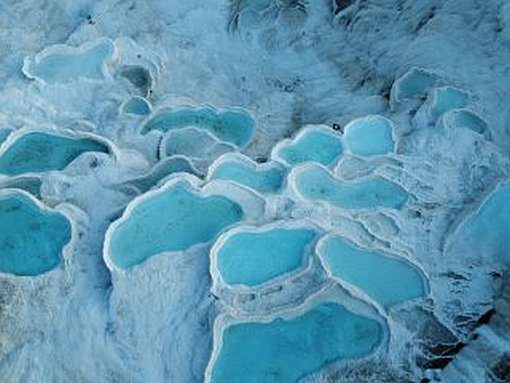
Hierve el Agua, Mexico
Located in Oaxaca, Hierve el Agua is another incredible travertine formation that resembles a waterfall frozen in time. Although the water flows very slowly, it has created striking rock formations that look like cascades of liquid stone.
The terraced pools offer stunning views of the surrounding mountains, and the mineral-rich waters are believed to have healing properties.
Photo by José Castillo on Unsplash
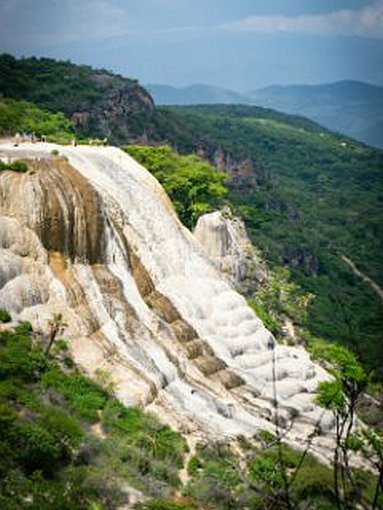
Plitvice Lakes, Croatia
The Plitvice Lakes National Park in Croatia is home to a series of interconnected lakes and waterfalls, many of which are formed by travertine barriers. The park’s turquoise waters, lush forests, and terraced cascades make it a must-visit for nature lovers.
The travertine barriers here are constantly growing and changing, creating a dynamic and ever-evolving landscape.
Photo by Ting Chang on Unsplash
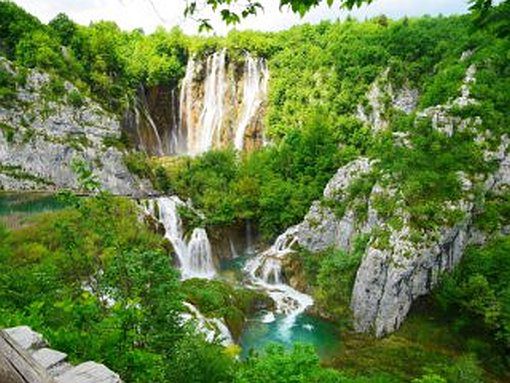
Huanglong Valley, China
Huanglong Valley in China’s Sichuan Province is renowned for its colourful travertine pools, waterfalls, and hot springs set against a backdrop of snow-capped mountains. The valley’s vivid blue and green pools are surrounded by golden-hued rock, creating a striking contrast that has earned it a place on the UNESCO World Heritage list.
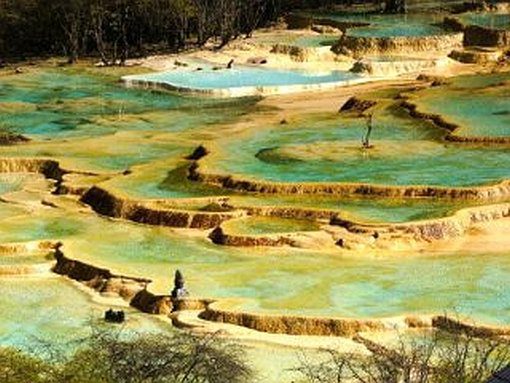
Erawan Waterfall, Thailand
Located in Erawan National Park, the Erawan Waterfall is a multi-tiered travertine waterfall with seven levels, each with its own unique pools and cascades. The bright blue water and lush green surroundings make it a popular spot for both locals and tourists looking to experience Thailand’s natural beauty.
Photo by Tomáš Malík on Unsplash
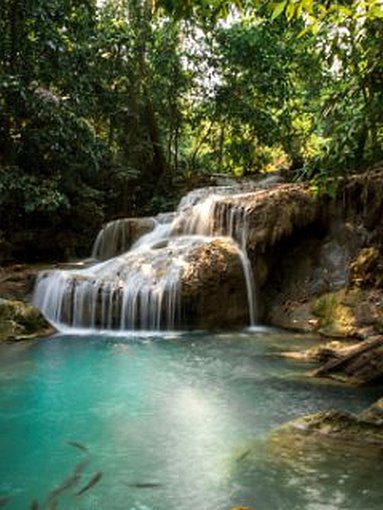
Kaparkan Falls, Abra, Philippines
Nestled in the lush green rain forest of Tineg, Abra, Kaparkan Falls, also known as Mulawin Falls, is one of the most stunning waterfalls in the Philippines. This terraced waterfall, with its unique limestone formations and crystal-clear waters, is a hidden paradise that showcases the unspoiled beauty of Abra.
Photo by Silverbackpacker
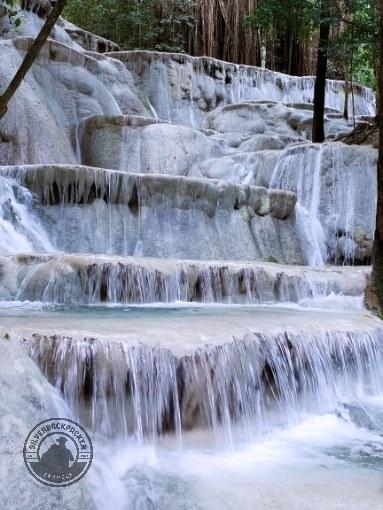

Discovering the Beauty
of
Travertine Waterfalls
Leave a comment below to let me know what you liked best.
Follow Silverbackpacker on Facebook, Instagram ,Twitter and Pinterest for more travel adventures and be notified about my latest posts and updates!
Thankyou for sharing 🙂
All photographs and content on this website remain the property of Silverbackpacker.com. Images may not be downloaded, copied, reproduced or used in any way without prior written consent.
Print purchases entitle the purchaser to the ownership of the image but not to the copyrights of the image which still remain with Silverbackpacker.com even after purchase.
Follow Silverbackpacker for more of his Travels
Facebook @silverbackpacker | Instagram @silverbackpacker Twitter @silverbackpaker | Pinterest @silverbackpaker Audere Est Facere – Silverbackpacker.com – To Dare is To Do
Affiliate Disclaimer: Links on this website may be affiliate links that could result in us receiving compensation when you purchase a product or service from that link. You do not pay any extra fees for these items. This helps us to keep this website going. Thank you for your support.
Disclaimer | Privacy Policy | Cookie Statement © All Rights Reserved

